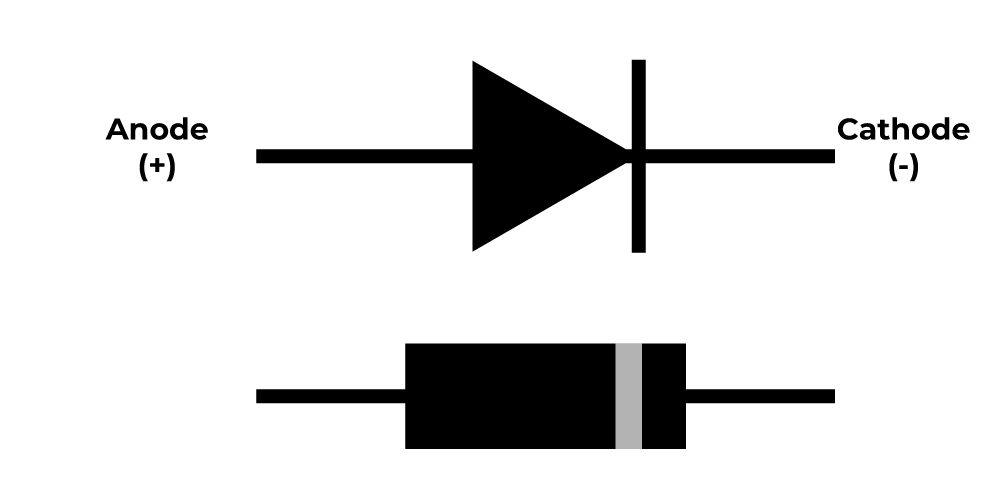
Diode
An introduction to Diode
Name: Own Teacher
Email: info@ownteacher.com
Created At: 01-11-2023
A diode is a two-terminal semiconductor device that primarily serves as a one-way electrical valve, allowing electric current to flow in one direction while blocking it in the other. Diodes are fundamental components in electronics and find wide-ranging applications. There are several types of diodes, each designed for specific functions. Here's a comprehensive explanation of diodes and their types:
Diodes:
P-N Junction: The basic diode consists of a p-n junction, where "p" represents the positively doped semiconductor material, and "n" represents the negatively doped material. This junction is essential for diode operation.
Forward Bias: When a positive voltage is applied to the p-side and a negative voltage to the n-side, the diode is in a forward-biased state, allowing current to flow. The voltage required to overcome the diode's barrier is called the forward voltage drop (typically around 0.7V for silicon diodes).
Reverse Bias: When a negative voltage is applied to the p-side and a positive voltage to the n-side, the diode is in a reverse-biased state, preventing current flow. In this state, the diode acts as an insulator.
Diode Characteristics: Diodes exhibit unique voltage-current (V-I) characteristics, where current exponentially increases with voltage in the forward-biased state while very little current flows in the reverse-biased state.
Types of Diodes:
Rectifier Diode: Converts alternating current (AC) into direct current (DC) by allowing current flow in one direction. Commonly used in power supplies.
Zener Diode: Designed to operate in the reverse-biased breakdown region, maintaining a constant voltage across its terminals. Used for voltage regulation and voltage reference applications.
Light Emitting Diode (LED): Emits light when current flows through it. Commonly used for indicators, displays, and lighting.
Schottky Diode: A type of diode with a lower forward voltage drop, ideal for high-frequency and high-speed applications.
Varactor Diode (Varicap): The capacitance of this diode can be controlled by varying the reverse-biased voltage, making it suitable for tuning and voltage-controlled oscillators.
Tunnel Diode: Exhibits a negative resistance region, primarily used in high-frequency and microwave circuits.
Avalanche Diode: Operates in the reverse-biased avalanche breakdown region. It's used for high voltage and fast switching applications.
PIN Diode: Combines a p-type, intrinsic, and n-type layer. It's sensitive to light and microwave signals, making it suitable for photodetectors and RF switches.
SCHOTTKY Barrier Diode: A metal-semiconductor diode known for its fast switching characteristics and low forward voltage drop.
Power Diode: Designed for high-power applications, often used in rectifier circuits and high-voltage applications.
Laser Diode: Emits coherent light, commonly used in optical communication and laser technology.
Diodes are essential components in electronic circuits, and their various types are employed in a wide range of applications, including power supplies, signal processing, communications, lighting, and more. Each type of diode is optimized for specific electrical or optical characteristics, allowing engineers and designers to choose the most suitable diode for a given task.
Conclusion
In summary, a diode is a semiconductor device that allows current to flow easily in one direction while restricting current flow in the opposite direction. There are various types of diodes, each with its own characteristics and applications. Understanding the operation and characteristics of diodes is essential for designing and analyzing electronic circuits.
Comment List
Leave a Comment.



